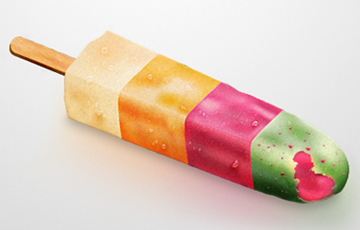Travelers love to capture their impressions. They make notes, take photos and collect things to
remember what they have experienced. We believe that exhibitions are similar journeys and that
revisiting this experience is as important as the actual time on location. Therefor we’ve invented the
digital Logbook that keeps track of everything that visitors find interesting. It contrast to other
solutions, it does not try to overwhelm you with a catalogue of everything. It is as simple as
collecting stamps when we were young.
Almost every big museum or exhibition offers apps for three reasons: content, navigation and
participation. Most of them do a good job in providing additional media such as articles, images,
videos and integrating maps of the exhibition space. Moreover, nearly all of them replace former audio
guides by copying the well-known procedure of entering 3 or 4 digit numbers to access the information.
But at times we tend to get a little bit frustrated when we fail to enter our smartphone pin
correctly; we thought that there must a better way to connect an app with an exhibit.
As part of our class, “Connect to Science,” at the University of Applied Sciences, Potsdam, we’ve
developed a concept such an exhibiton app that used a physical interface to connect to the exhibits.
Users start their journey with the empty logbook app that can be filled with unique stamps — like a
passport, keeping track of everywhere you have traveled.



Considering the the broad spectrum of users, from kids to seniors, we felt the need for a flat
information architecture and came up with three views: Collection, Review and Map.
With successful apps such as Path and Facebook, we were inspired by their navigation and
re-interpreted it to fit our needs. Users can swipe left and right to switch between the different
sections of the Logbook. To collect something new, you simply orient the device to landscape mode and
stamp on the blank canvas. Your Logbook will then be packed with articles, photos and videos waiting
to be reviewed instantly while you are on the go or relaxing comfortably at home. Users can swipe left
and right to switch between the different sections of the Logbook.
To collect something new, you simply orient the device to landscape mode and stamp on the blank
canvas. Your Logbook will then be packed with articles, photos and videos waiting to be reviewed
instantly or when you are at home.

Our prototype setup consists of a wooden stamp that can be recognized by our web app that runs on an
iPhone.
On the hardware-side, we drilled a hole through the stamp, attached three soft conductive pads to the
bottom and connected them to a copper wire that ends at the top of the stamp. As the stamp touches the
screen of the iPhone, it recognizes a pattern of touch points that relates to the specific stamp.
Variations are endless, considering 5 touch points that can be placed at various distances from each
other and thus forming unique patterns.
On the software side, we prototyped parts of the app with Javascript while making heavy use of CSS3
transitions. Having both, stamp and app, we were able to turn our design into a prototype to
demonstrate our concept in our video.











